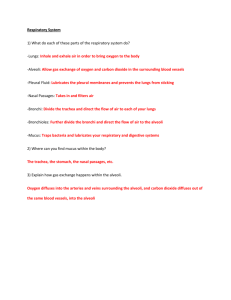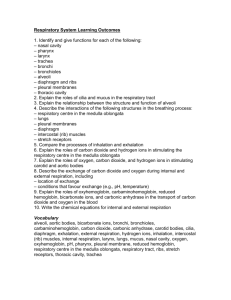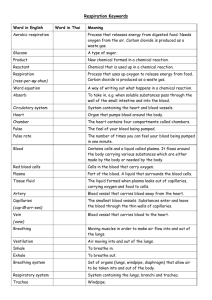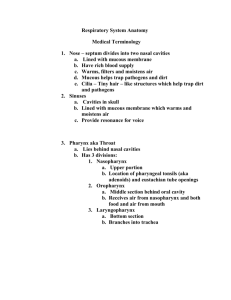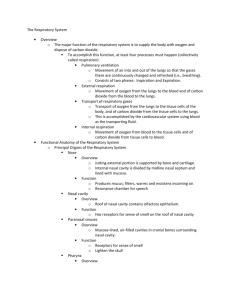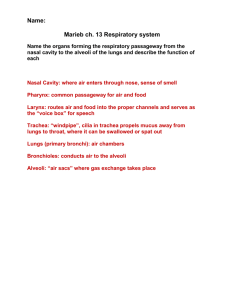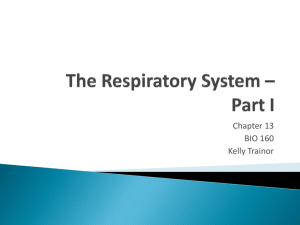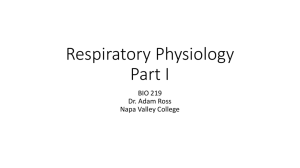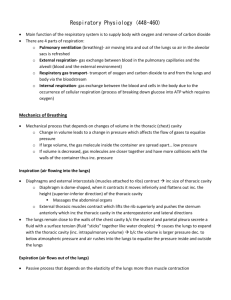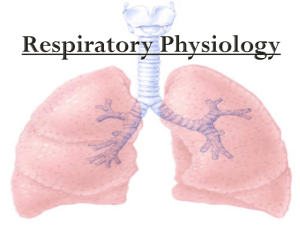Respiratory System Notes
advertisement
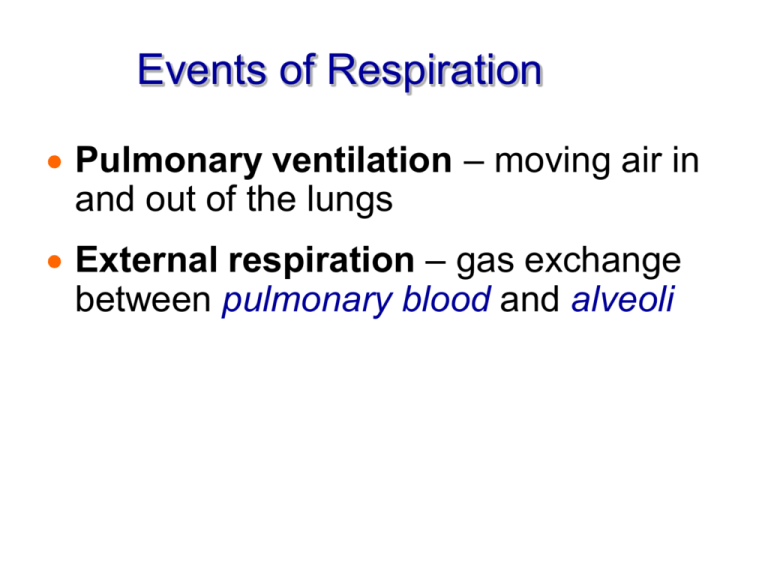
Events of Respiration Pulmonary ventilation – moving air in and out of the lungs External respiration – gas exchange between pulmonary blood and alveoli Events of Respiration Respiratory gas transport – transport of oxygen and carbon dioxide via the bloodstream Internal respiration – gas exchange between blood and tissue cells in systemic capillaries Mechanics of Breathing (Pulmonary Ventilation) Completely mechanical process Depends on volume changes in the thoracic cavity Volume changes lead to pressure changes, which lead to the flow of gases to equalize pressure Mechanics of Breathing Two phases Inspiration – flow of air into the lungs Expiration – air leaving lungs Inspiration Diaphragm and intercostal muscles contract The size of the thoracic cavity increases External air is pulled into the lungs due to an increase in volume Volume before Volume after Exhalation A passive process which depends on natural lung elasticity As muscles relax, air is pushed out of the lungs Forced expiration can occur mostly by contracting internal intercostal muscles to depress the rib cage Pressure Differences in the Thoracic Cavity Normal pressure within the pleural space is always negative (intra-pleural pressure) Differences in lung and pleural space pressures keep lungs from collapsing Nonrespiratory Air Movements Can be caused by reflexes or voluntary actions Examples Cough and sneeze – clears lungs of debris Laughing Crying Yawn Hiccup Respiratory Volumes and Capacities Normal breathing moves about 500 ml of air with each breath (tidal volume [TV]) Many factors that affect respiratory capacity A person’s size Sex Age Physical condition Residual volume Air remaining in lungs after expiration About 1200 ml Respiratory Membrane (Air-Blood Barrier) Thin epithelial layer lining the walls of the alveoli Pulmonary capillaries cover external surfaces of alveoli Gas Exchange Gas crosses the respiratory membrane by diffusion Oxygen enters the blood Carbon dioxide enters the alveoli Macrophages add protection Surfactant coats gas-exposed alveolar surfaces External Respiration Oxygen movement into the blood The alveoli always have higher oxygen concentration than the blood Oxygen moves by diffusion towards the area of lower concentration Pulmonary capillary blood gains oxygen External Respiration Carbon dioxide movement - out of the blood Blood returning from tissues has higher concentrations of carbon dioxide than air in the alveoli Pulmonary capillary blood gives up carbon dioxide Blood leaving the lungs is oxygen-rich and carbon dioxide-poor




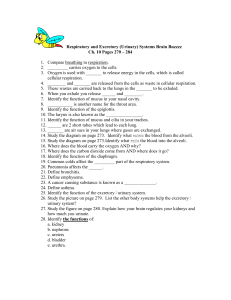
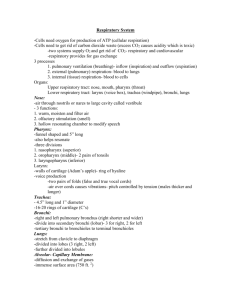
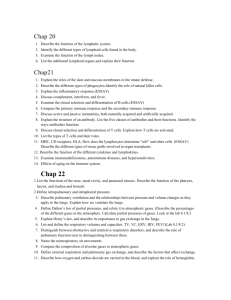

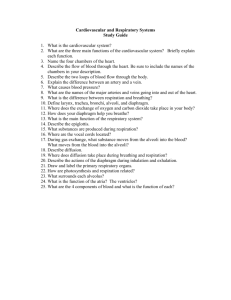

![Respiratory System 2_ppt [Compatibility Mode]](http://s3.studylib.net/store/data/008318875_1-62f26812255e4a1d92c8d400b0f527ce-300x300.png)
